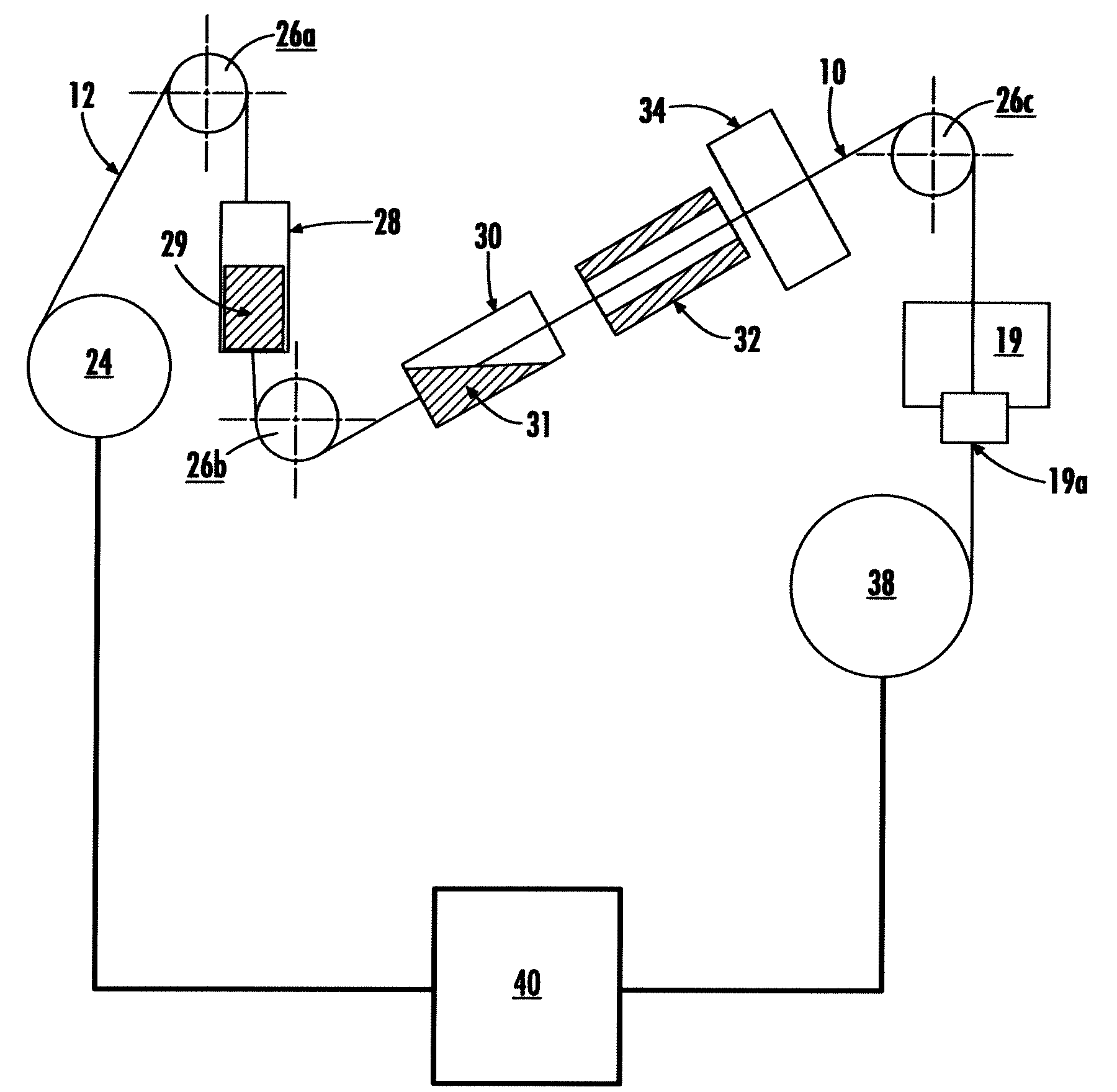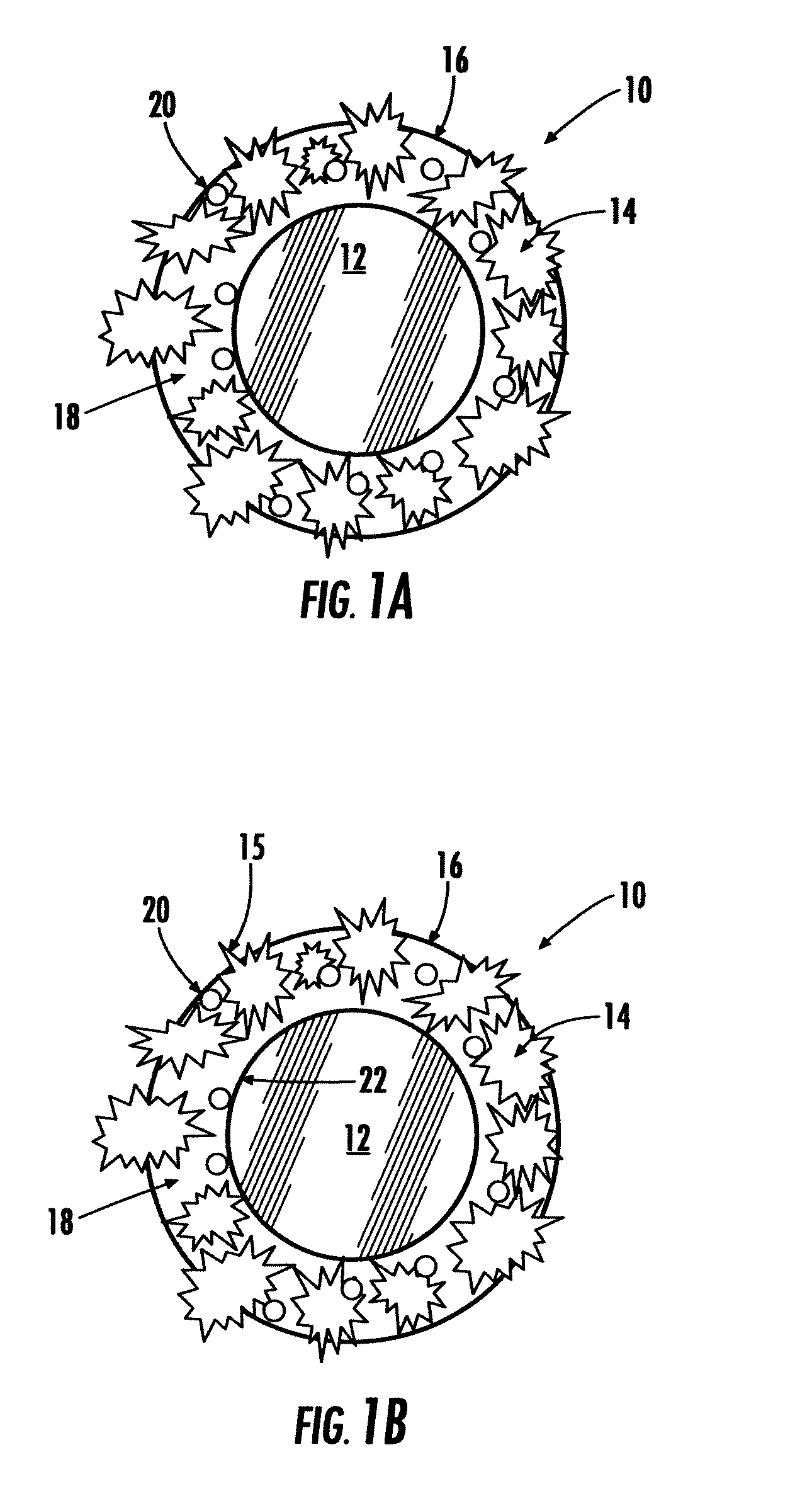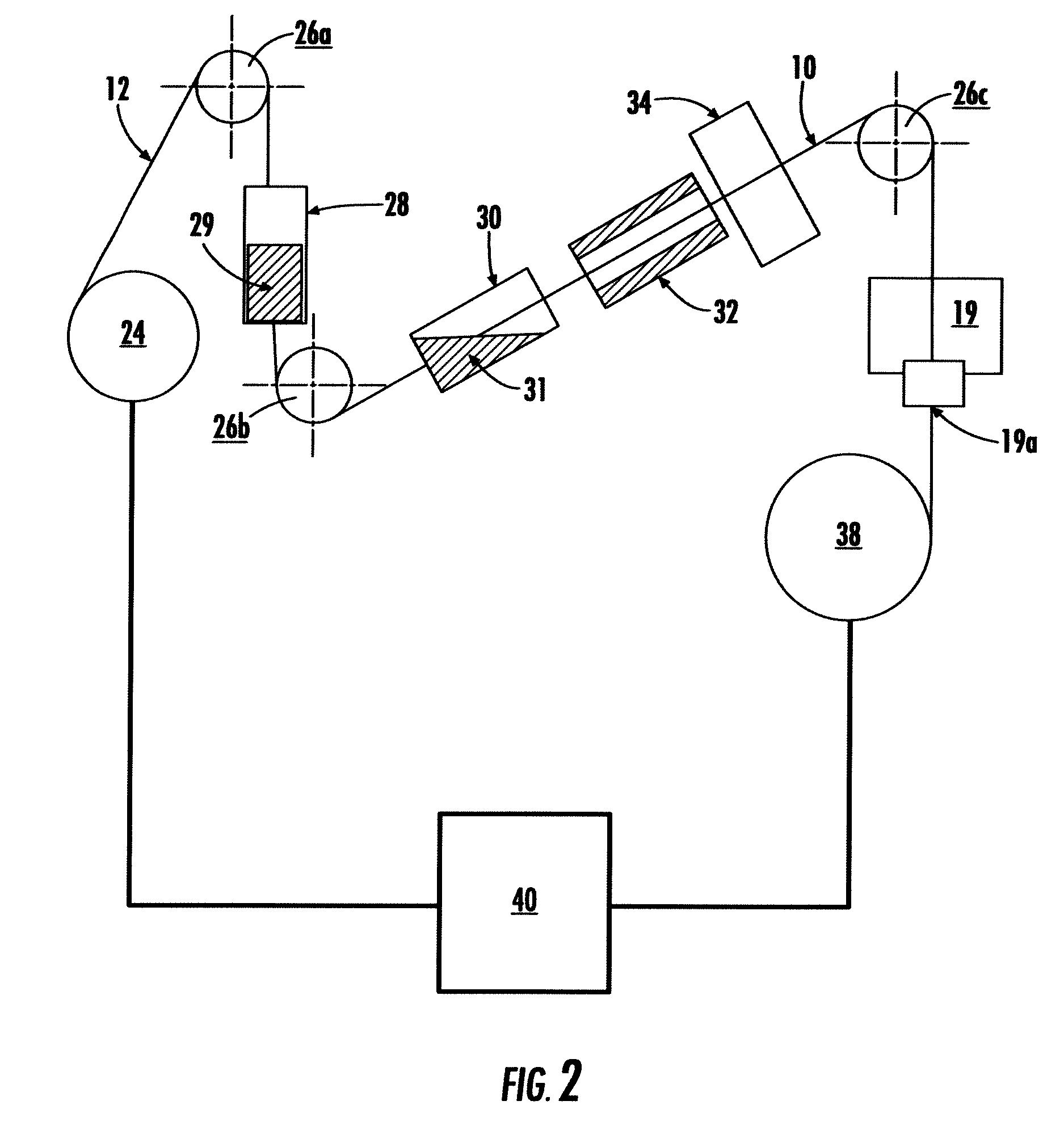Methods, Wires, and Apparatus for Slicing Hard Materials
a technology of wires and hard materials, applied in the direction of soldering equipment, metal sawing tool making, other chemical processes, etc., can solve the problems of low efficiency of consumable abrasives, low and loss of kerfs and cutting efficiency of id saws
- Summary
- Abstract
- Description
- Claims
- Application Information
AI Technical Summary
Benefits of technology
Problems solved by technology
Method used
Image
Examples
example
Forming a Composite Super-Abrasive Wore
[0070]The following is a description of the composite super-abrasive wire formed by an apparatus as shown in FIG. 2:
[0071]A wire core metal wire having a diameter of about 230 microns (tin coated or high tensile steel wire) was etched by passing through an etching bath of an acid containing an aggressive liquid flux (N-3 by LA-CO Industries, Inc. Elk Grove, Ill.) maintained at room temperature. As the wire exited the etching bath, it was wound on a “take-off” spool. The etched wire was then introduced into the liquid flux applying chamber so that the wire was covered by the liquid flux (water soluble paste flux sold under the designation H-205 by Oatey Co., Cleveland, Ohio). The wire was then passed through a powder chamber so that the wire was covered by the mixture, which includes the powdered solder alloy (96.5% tin and about 3.5% silver, mesh −400 / +500; Amtech, Inc., Branford, Conn.), the powdered flux material (Rosin Powder, Todd & Moore s...
PUM
| Property | Measurement | Unit |
|---|---|---|
| temperature | aaaaa | aaaaa |
| lengths | aaaaa | aaaaa |
| roughness | aaaaa | aaaaa |
Abstract
Description
Claims
Application Information
 Login to View More
Login to View More - R&D
- Intellectual Property
- Life Sciences
- Materials
- Tech Scout
- Unparalleled Data Quality
- Higher Quality Content
- 60% Fewer Hallucinations
Browse by: Latest US Patents, China's latest patents, Technical Efficacy Thesaurus, Application Domain, Technology Topic, Popular Technical Reports.
© 2025 PatSnap. All rights reserved.Legal|Privacy policy|Modern Slavery Act Transparency Statement|Sitemap|About US| Contact US: help@patsnap.com



